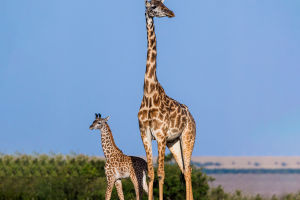The Ice Age, also known as the Last Glacial Period, was a geological period that lasted from around 2.6 million years ago to 11,700 years ago.
During this time, much of the Earth's surface was covered in ice sheets, and the climate was much colder than it is today. However, around 11,700 years ago, the Ice Age came to an end. In this article, we will explore the various factors that led to the end of the Ice Age.
One of the primary factors that led to the end of the Ice Age was changes in the Earth's orbit and axial tilt. The Earth's orbit is not perfectly circular, but rather elliptical. This means that at different times, the Earth is closer to or farther away from the sun. Additionally, the Earth's axial tilt changes over time, meaning that the angle at which the Earth's axis is tilted relative to the plane of its orbit also changes. These factors combine to create variations in the amount of solar radiation that the Earth receives over time.
Around 11,700 years ago, the Earth's orbit and axial tilt reached a point where the Northern Hemisphere received more solar radiation during the summer months. This increased the amount of melting that occurred on the Northern Hemisphere's ice sheets, and this, in turn, led to a positive feedback loop. As more ice melted, the surface area covered by ice decreased, and this allowed more sunlight to be absorbed by the Earth's surface, leading to further melting.
Another factor that played a significant role in the end of the Ice Age was the release of carbon dioxide from the Earth's oceans. During the Last Glacial Period, much of the Earth's carbon dioxide was trapped in the oceans, where it was dissolved in the cold, dense water. However, as the Earth's climate began to warm, the oceans began to release this carbon dioxide back into the atmosphere. This process was accelerated by the melting of the ice sheets, which caused sea levels to rise and altered ocean currents, which, in turn, changed the distribution of carbon dioxide in the oceans.
A third factor that contributed to the end of the Ice Age was changes in the Earth's vegetation cover. During the Last Glacial Period, much of the Earth's land surface was covered in grasslands and tundra, which did not absorb as much sunlight as forests and other types of vegetation. As the Earth's climate warmed, these grasslands and tundra regions began to be replaced by forests and other types of vegetation, which absorbed more sunlight and helped to trap more heat on the Earth's surface. This, in turn, contributed to further warming and melting of the ice sheets.
Finally, it is important to note that the end of the Ice Age was not a sudden event but rather a gradual process that took place over several thousand years. As the factors discussed above combined to create a positive feedback loop of warming and melting, the Earth's climate gradually shifted from the cold, dry conditions of the Last Glacial Period to the warmer, wetter conditions of the present day. This gradual shift had a significant impact on the Earth's ecosystems, as species adapted to the changing climate and migrated to new areas.
The end of the Ice Age was a complex process that was driven by a combination of factors, including changes in the Earth's orbit and axial tilt, the release of carbon dioxide from the oceans, changes in the Earth's vegetation cover, and a positive feedback loop of warming and melting. Although the end of the Ice Age occurred over several thousand years, it had a profound impact on the Earth's ecosystems and paved the way for the emergence of modern human societies. Understanding the factors that led to the end of the Ice Age is essential for understanding the Earth's climate system and for predicting future climate change.


